We are taking a dive deep into the world’s oceans and reefs! At AlgaeBarn, one of our top priorities is promoting more sustainability in our hobby. So, we wanted to take this time to discuss some of the progress that is being made in the aquaculture industry.
But did you know that Red Ogo has become one of the most valued macroalgae species in aquaculture? Aquarists and aquaculturists alike have found so many uses for this beautiful seaweed. In this article, we are going to focus on the ways that Red Ogo is being used in the aquaculture industry.
Many reef keepers rely on natural filtration methods for our aquariums. We know how well macroalgae works to remove nutrients and wastes. There are also a growing number of reef keepers that have joined the ‘planted reef’ movement. Planted reef tanks are a stunning combination of refugium and a display. More and more aquarists are beginning to adopt this technique as well as densely planted refugia.
One of the benefits of growing a macroalgae in the refugium is having access to a fresh supply of food for hungry herbivores. Not all seaweeds are edible or preferred as a food source by all animals. Chaeto, for example, is a seaweed that is generally not favored by reef tank inhabitants. But the Lettuce Nudibranch and certain snails will devour chaeto.
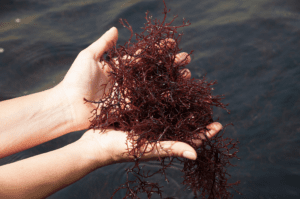
Red Ogo as a food source
Aquaculture is a very fast-growing method for producing food. In fact, this is also a sustainable and efficient way to grow food. Shrimp, shellfish, fish, and seaweed are all produced with minimal environmental impact. Seaweed like Red Ogo is also used to filter effluent from aquaculture sites. These are all near zero-impact methods for farming.
Near zero-impact simply means that farming and culturing these products demands fewer resources. In inland aquaculture sites, much of the water used is recycled. The use of natural sunlight also lessens the need for electrical supply. Red Ogo is also shown to be a great food source for farmed shellfish. Not only are seaweeds like Red Ogo nutrient-dense foods for people, but they also increase shellfish farm yields.
https://www.shutterstock.com/image-photo/gracilaria-gracilis-red-sea-algae-growing-1264475491
In most cases, aquaculture requires less land and produces fewer greenhouse gases than traditional farming. For people in remote coastal areas around the world, aquaculture provides a source of income and food. This method of farming can also bring about positive impacts by changing where our food comes from. The traditional methods of farming have many environmental consequences. Fertilizer runoff and greenhouse gas emissions are just two of the ways farming on land have impacted the environment. Sadly, this is necessary to meet ever-growing demands.
Red Ogo is a superfood!
Red Ogo seaweed is a nutritious food source for shellfish and fish but also a staple for human consumption. When boiled, Red Ogo can produce agar. Agar is a gelatinous material used as a thickening agent for food. Red Ogo is called a superfood because it has good amounts of trace minerals like iodine, iron, magnesium, and potassium. A single serving of Red Ogo is loaded with Calcium. Surprisingly, it has a very low sodium content when rinsed in fresh water.
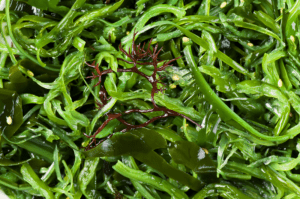
Red Ogo is a crucial species for restorative aquaculture
Many aquaculture farms have begun tandem operations with Red Ogo macroalgae. This is becoming more popular for several reasons. In mariculture sites, farmers are now growing seaweed to supplement yields. Growing macroalgae like Red Ogo greatly benefit the flora and fauna of the mariculture site. Farming seaweed is also shown to be effective in combating ocean acidification.
Seaweed farming gives habitat and shelter to more vulnerable species. These farms can help to replenish fish populations hurt by overfishing. With the improved management of fisheries, efforts to conserve wild populations are gaining ground in this battle. Farming seaweeds, like Red Ogo for example, is crucial in areas of habitat loss. Destructive fishing methods like bottom trawling are responsible for the decline of wild seagrass beds.
Seaweed farms give fisheries a chance to recover from decades of overfishing. Many regions have seen seagrass beds depleted due to dredging and trawling fishing. This can cause irreparable damage to fisheries as mature fish are unable to spawn in these areas. Further, juvenile fish will not have the shelter of seagrass beds. While restrictions have been placed in many areas of the world, recovery efforts take time. Sites farming seaweed like Red Ogo are providing shelter for juvenile fish. These areas can also encourage spawning in vulnerable fish.
The culture of seaweed is benefiting the ocean in the same way macro benefits our reef tanks. Seaweed farming lessens the effects of pollution. Macroalgae beds also give shelter to shellfish which are a vital piece of the ocean’s food webs. These mariculture sites can act as natural filters. They help with nutrient absorption, consume phytoplankton, and denitrify local waters.
Seaweed farming can also help to combat ocean acidification. Ocean acidification poses a massive threat to our oceans. This happens when carbon dioxide gas in the atmosphere dissolves in the ocean. This results in a low pH level which makes the ocean water more acidic. Seaweeds like kelp have been shown to absorb carbon dioxide in farming systems. Although more research is needed in this area, the results are promising.
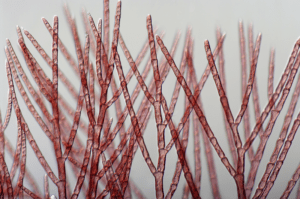
Conclusion
In the reef-keeping hobby, we all know how effective macro is at keeping our reef tank systems stable and healthy. So, it should be no surprise to learn that the aquaculture of seaweed is being promoted on a global scale. There is much potential for positive impacts on an economic and environmental scale.
In areas of food instability and scarcity, seaweed culture is helping to provide more access to healthy foods and income. Seaweed farming gives people in remote areas more resources to improve food security. This income can also help to make food and resources more affordable for countries.
Seaweed farming also has the potential to reduce blooms of toxic algae. Seaweeds like Red Ogo can help remove excess nutrients from polluted areas. This can reduce the number and the toxicity of harmful algae blooms seen in these areas. Research is now showing strong evidence that farming both shellfish and seaweed has the potential to improve water quality in the ocean.
We hope that this article has provided some great insight into why we think seaweed is one of the best resources for combating pollution in our oceans. Be sure to check back often as we continue to celebrate our oceans! Until then, happy reefing!

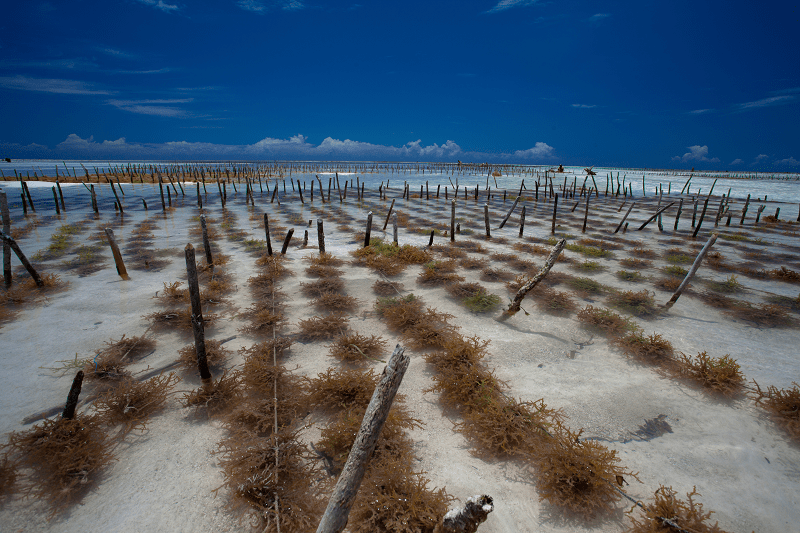


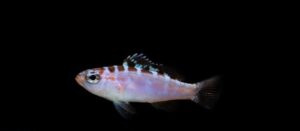

Leave a Reply